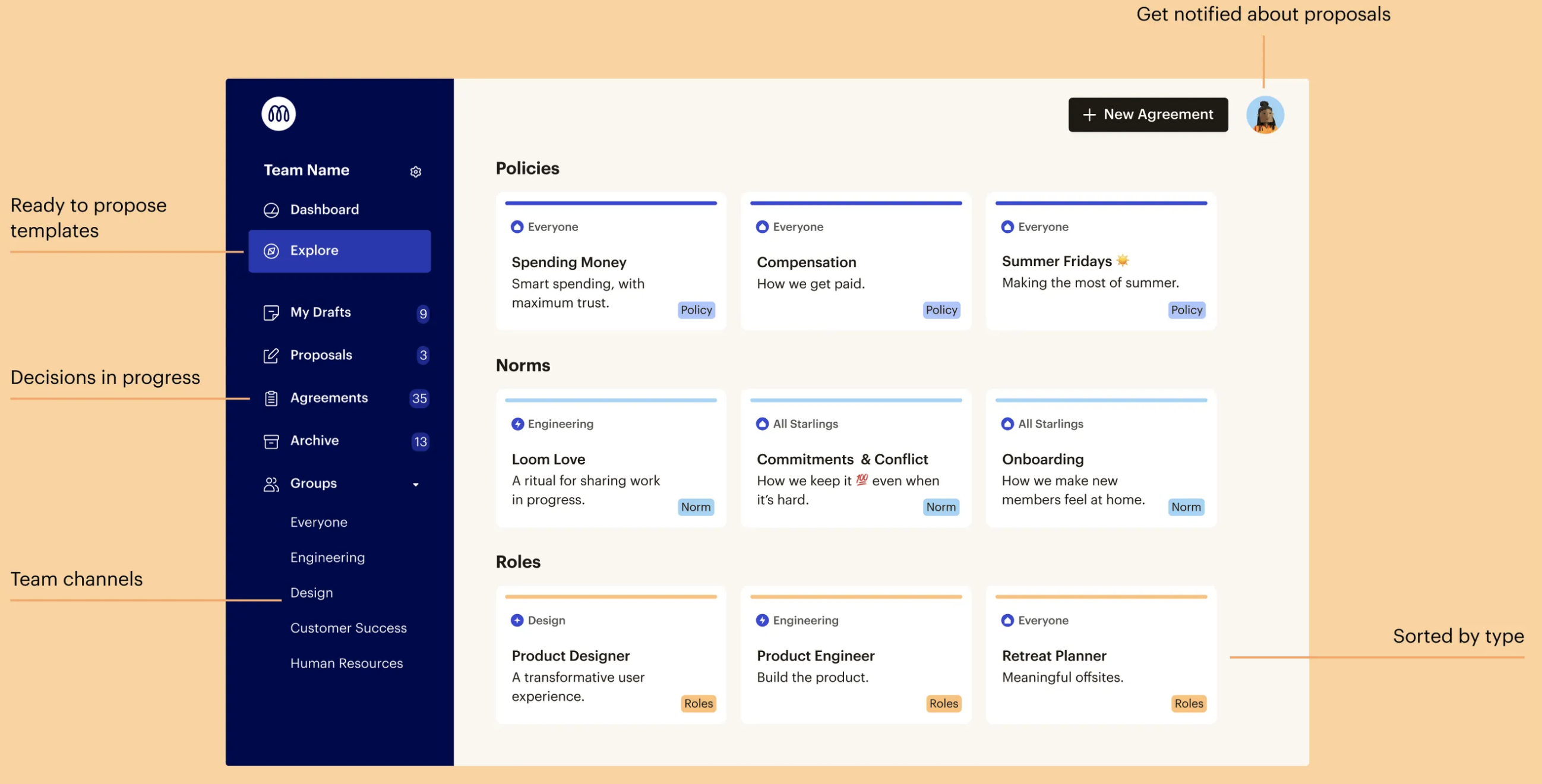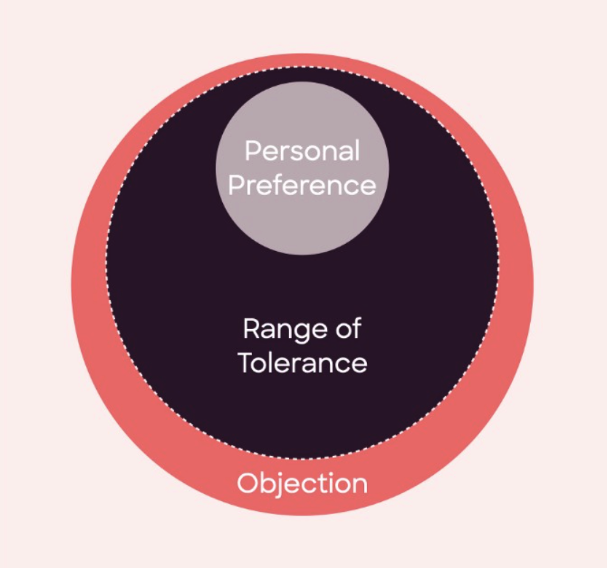Backing Murmur — the operating system for better, faster, more adaptive decision making
by Felix Machart, Dec. 15
We are excited to be co-leading the $8M Seed round of Murmur, enabling truly collaborative and asynchronous decision-making. In this article, we share why we believe that this project is well-positioned to help organizations become more adaptive and document-driven, evolve their culture, and bring DAO / self-management principles to the mainstream.

Source: Murmur.com
Enter Murmur – The Github for organizational design & structure
Murmur provides the operating system for collaborative, asynchronous decision-making. It will help teams continuously improve how they draft, propose, and make decisions. If it’s important enough to write down, then it belongs in Murmur. Participatory governance allows people to participate in directing, steering and shaping an organization. Existing top-down, predict-and-execute decision-making frameworks make it difficult for organizations to adapt continuously to their dynamic environments. When sufficiently empowered, each person in an organization can act as a sensor to steward this process. Murmur will be increasingly community-driven. Users can browse and borrow great examples from other companies, which are often inclined to share their way of working in order to enable the best contributors to self-select their desired culture.

Consent enables forward movement through “safe-to-try” decisions that fall within everyone’s range of tolerance. | Source: The Ready
Progress, not perfection
Murmur follows a built-in, three-round process for consent-based decisions to keep input focused with a bias towards progress. Through expiration dates and regular feedback loops, Murmur helps users adopt an experimental mindset focused on learning and continuous improvement, not perfection.
Users are nudged to take note of aspects of their work that are not structured ideally. Anyone can propose changes or a new agreement if they find room for improvement or a shared practice that is already working well, but isn’t written down.
Autonomy & culture
Autonomy in organizations is increased based on the collective interplay of consent-based, opt-in agreements that define their existence and boundaries as well as provide autonomy for decisions at the edges of an organization along these boundaries. DAOs and companies run to a large extent on culture – social norms – “the way things are done” in organizations, which is complementary to trust-minimized legal and smart contracts. The latter will never be able to capture the rich social and psychological dynamics of groups, such as how communication should occur among members, which nevertheless benefits from a structured governance process.
On-chain organizations/DAOs can use Murmur and its structured process for building consent for proposals in a smaller circle of collaborators, which are then brought up for a wider DAO vote. Alternatively, to the consent-based method, a variety of decision-making mechanisms might be integrated. DAOs or digital cooperatives can leverage the DAO mantra “automation at the center, humans at the edges” based on norms, culture, agreements and collective decision-making algorithms. There will likely be many types of hybrid structures such as high-level strategic & funding decisions being taken top-down, with operations being decentralized/localized and in self-management.
Murmur can make successful organizational culture visible for the first time with a data-driven approach that ties changes in organizational design practice to outcomes (quantitative through integrations & qualitative through human feedback).
Remote, hybrid & asynchronous modes of working are advancing
We believe that …
1) … decentralized, remote & hybrid, people-empowering organizations will proliferate and prove more responsive, adaptive and thus successful
2) … the Murmur team fits perfectly to accomplish that mission, as it will leverage its first mover advantage and continue to create partnerships with complementary collaboration tools, consultancies and their users as well as leverage a growing repository of management best practices and data based on an engaged community. All that leads to a network effect, the flywheel for scalable growth and defensibility, we believe.
The shift to remote work has been supercharged by the pandemic. Trends like the “Great Resignation” or “Quiet Quitting”, the term for the cultural shift towards a better work-life balance post-pandemic, is forcing businesses to rethink working practices. Teams and individuals lack autonomy in decision-making in centralized command & control structures, which frustrates them as they cease their individual sovereignty in bureaucratic hierarchies.
The world is changing at an ever more rapid rate – organizations need to keep pace
Increased connectivity means information moves nearly instantly and the pace of change is accelerating. Corporate hierarchy is “legacy code”, which is not well-equipped for this environment. It stems from a time when organizations were complicated but predictable. Processes were linear, information traveled slowly, and change was gradual. Now, however, businesses are part of a complex global network of commerce that produces unpredictable emergent opportunities. Organizations become increasingly inflexible as they scale, local information is not leveraged to the best extent possible & client needs are underserved.
Bottlenecks and single points of failure are key characteristics of hierarchies. Politics, conformity pressure, groupthink, and multifarious biases jeopardize effective management and decision-making.
Opportunities to change the way an organization works and to foster a positive culture are always present but acting on them is often neglected. Decisions can be slow and great ideas often get buried under day-to-day work.
The team building roundabout infrastructure
We believe Aaron Dignan and the team with backgrounds from Apple, Google, Webflow, Zappos (and others) are well-positioned to navigate both the emerging DAO ecosystem as well as traditional organizations and thus synthesize learnings from both worlds into a solution that serves various types of endeavors. He built The Ready, a successful organizational change consultancy at the forefront of the growing movement towards more responsive forms of organization. They have been helping companies focus less on command-and-control and more on self-management, less on hierarchy and more on distributed authority, while themselves operating in self-management.
In his book Brave New Work, Aaron asks whether an organization behaves like traffic lights or roundabouts. Traffic lights have strict rules, which require no thought or judgment. Green: Go. Red: Stop. Roundabouts, on the other hand, are based on agreed principles. Adaptive organizations emerge from empowered, autonomous individuals that can make educated decisions in roundabouts to progress.